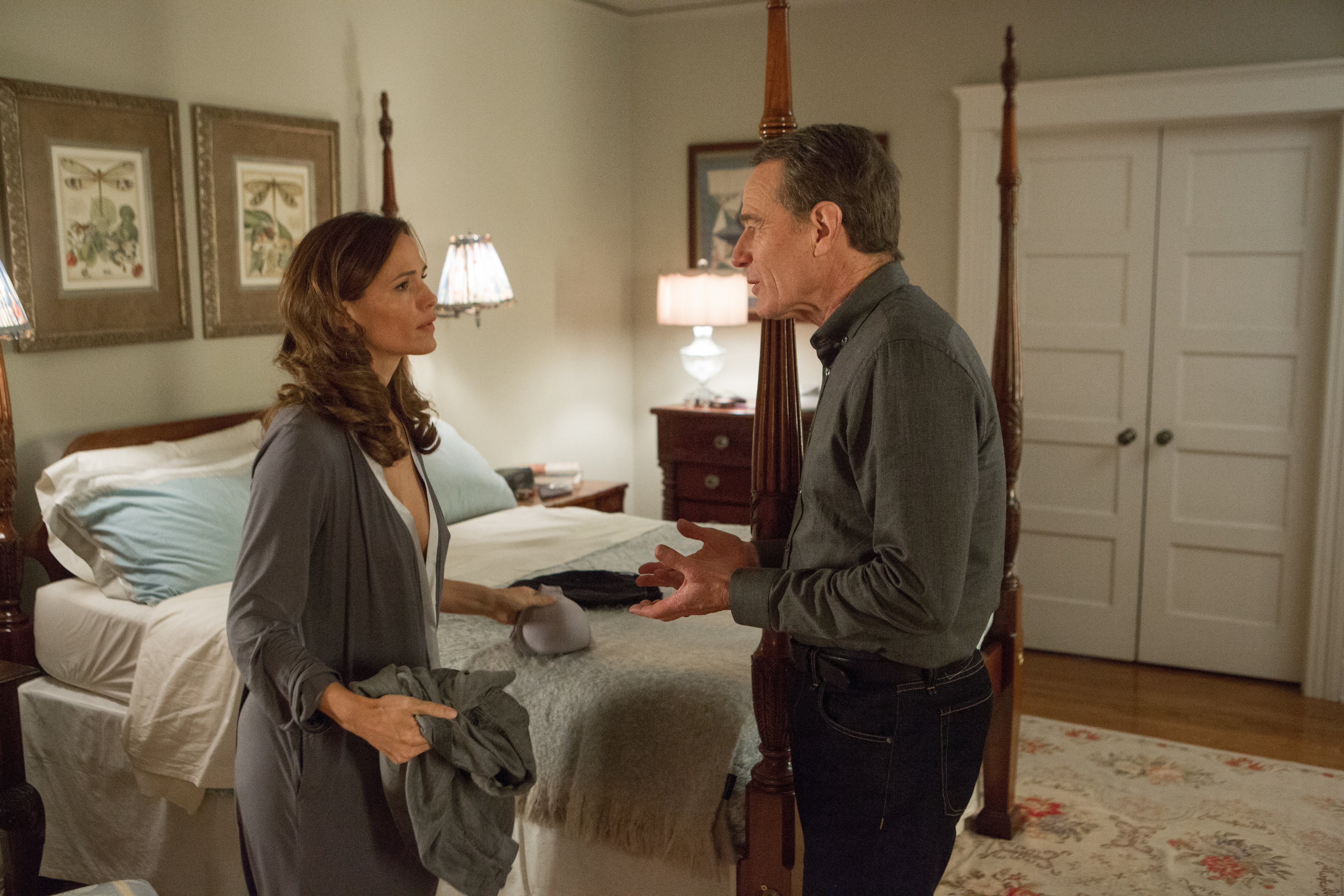
Based on a short story by E.L. Doctrow, Robin Swicord’s “Wakefield” focuses on Howard Wakefield, a successful attorney who is tired of his job, his family and his responsibilities. He decides to disappear and live permanently as a hermit in the attic of his garage. While his coworkers and family believe he is dead, Howard scavenges for food, bathes outside and sleeps on the filthy floor. He spends his days watching his family from the garage.
This scenario is undoubtedly intriguing, but Swicord does not make the most out of this material. Her film does not answer the queries that are at the heart of Doctrow’s story — who is Howard Wakefield? How does he interact with those around him? Why does he make the drastic choice to remove himself from daily life? Thus, while “Wakefield” features strong performances from Bryan Cranston and Jennifer Garner, it does not live up to the potential of its premise and is ultimately forgettable.
In translating Doctrow’s story to the screen, Swicord must address a fundamental problem. How do you provide insight into a hermit’s mindset when he is totally alone and does not speak for long periods of time? The director could illuminate Wakefield’s thoughts by calling attention to his subtle expressions and small movements. Swicord does this in some moments. We see Howard’s excitement as he discovers a half eaten pint of ice cream in the garbage or his misery when he has to spend a cold winter in the unheated attic. Swicord, however, relies heavily on the voiceover. Therefore, she often tells rather than shows, and the voiceovers lead to some moments that are not cinematic. For example, early in the film, Howard mentions that he and his wife, Diana, regularly make love. We watch them kiss and moan while Howard intones, “We’d have sex. Or, as Diana would say provocatively, we’d fuck.” Given the graphic visuals, his voiceover here is superfluous.
Sometimes these voiceovers are more than unnecessary; they also create confusion. Howard Wakefield, to say the least, is a complicated man, and Swicord never establishes who he is. In a sense, there are two Howards in the film. One Howard is a typical, middle aged city dweller. He talks about the stresses of dealing with complex legal cases and figuring out the train schedule. The other Howard is anything but an ordinary suburbanite. Instead, he seems sadistic. He discusses his desire to flirt with other women and make Diana jealous. He makes snide remarks about Diana’s body. The humdrum Howard and the sexually adventurous Howard never seem to coalesce.
For his part, Bryan Cranston chooses to portray Howard as perverted. It seems as if he is one step away from the lunatic asylum, and he is a genuinely frightening peeping Tom. Yet as he retreats more and more into the attic, he becomes less depraved and more human. He recognizes that his relationship with his wife is founded on more than carnal thoughts. As he watches her grieve the loss of her husband, care for her children and struggle to make ends meet, he realizes that she is not a sex object but a determined, strong and self-sufficient woman. Cranston creates this emotional arc for his character solely through his expressions and mannerisms. This film stands as a testament to his skill as an actor. Cranston’s physical transformation during the film is also astounding. He changes from a well-fed, clean-cut attorney into a thin, bedraggled beggar.
If there are two Howards in the film, there are also two Dianas. As Howard informs us, Diana is a ballet dancer who gave up her career on the stage for a life in the suburbs. The screenplay requires Diana to be both an ordinary wife and mother and a debauched woman willing to participate in her husband’s sadomasochistic activities. Jennifer Garner plays Diana as a ballet dancer turned housewife rather than as a ballet dancer turned nymphomaniac. She captures the ennui of Diana’s life as she goes to work, makes meals and attends mediocre house parties. Still, Garner’s portrayal of Diana as a bored suburbanite does not match Cranston’s focus on Howard’s sexual side. Howard and Diana’s relationship remains nebulous.
Because Swicord cannot define her main characters, she also cannot elucidate why Howard makes the choice to retreat from society. In his voiceovers, Howard makes vague, contradictory remarks on the subject. At one point, he explains that “none of this is a rejection of my wife or suburban life or any of that.” Yet, at other moment in the film, he discusses the stresses of his former routine and concludes that the suburban lifestyle “was my prison. That’s what I’ve escaped.” Does Howard’s choice represent liberation from the prison of suburbia? Does it represent a primal return to nature? Does it represent the ultimate sex game? Just as Howard and Diana seem to be bipolar beings, Swicord’s statements on Howard’s decision are muddled.
This is a shame because the story is rife with allegorical and symbolic possibilities. Other directors might take Doctrow’s premise and create something disturbing and thought-provoking. Perhaps David Cronenberg would use Howard’s disappearance as a way to explore his sexual frustrations. Perhaps David Lynch would create a surreal version of the story and critique societal mores. In Swicord’s hands, the promise of Doctrow’s ideas is extinguished. Just as Howard disappears from his home and office, “Wakefield” is likely to vanish from your mind.
Contact Amir Abou-Jaoude at amir2 ‘at’ stanford.edu.
